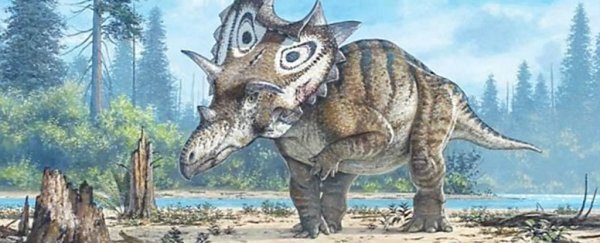A new horned dinosaur with two spikes projecting from the back of the neck shield has been identified, according to a study in the journal PLOS ONE. The dinosaur was called Judith after the Judith River geological formation where the fossils were found in Montana.
Spiclypeus shipporum is different from other horned dinosaurs in that the horns over the eyes are stuck out sideways from the skull with a unique arrangement of bony spikes from the margin of the frill. Some spikes curled forward while others projected outward.
"This is a spectacular new addition to the family of horned dinosaurs that roamed western North America between 85 and 66 million years ago," says Jordan Mallon, from the Canadian Museum of Nature, Canada.
Judith lived in pain. Judith's upper arm bone showed distinct signs of arthritis and bone infection.
Despite this, the annual growth rings inside the dinosaur's bones suggest Judith lived to maturity and would likely have been at least 10-years-old when it died.
The name Spiclypeus is a combination of two Latin words meaning "spiked shield." The name shipporum honours the Shipp family on whose land the fossil was found near Winifred, Montana by Bill Shipp.
"Little did I know that the first time I went fossil hunting I would stumble on a new species," says Shipp, a retired nuclear physicist who became a fossil enthusiast after moving to his dinosaur-rich area of Montana.
"As a scientist, I'm really pleased that the Canadian Museum of Nature has recognised the dinosaur's value, and that it can now be accessed by researchers around the world as part of the museum's fossil collections."
 A cast of the reconstructed skull of Spiclypeus shipporum. Martin Lipman, Canadian Museum of Nature.
A cast of the reconstructed skull of Spiclypeus shipporum. Martin Lipman, Canadian Museum of Nature.
This article was originally published by Business Insider.
More from Business Insider:
